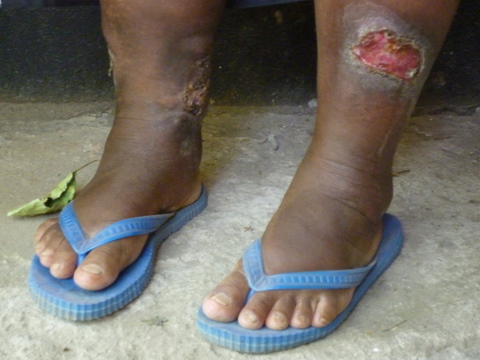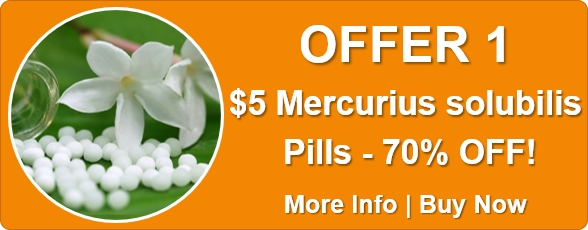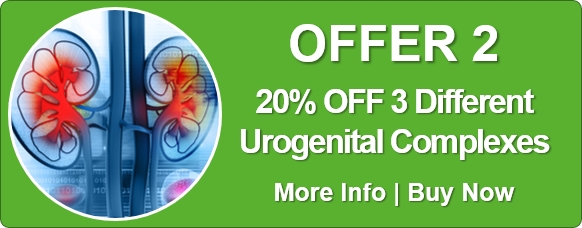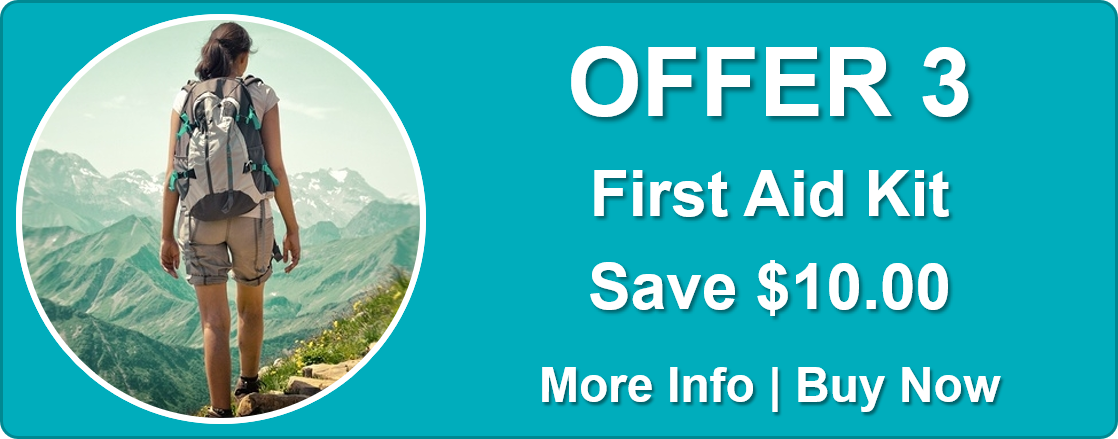Part 1: Homeopathy and AIDS – A Letter from Africa
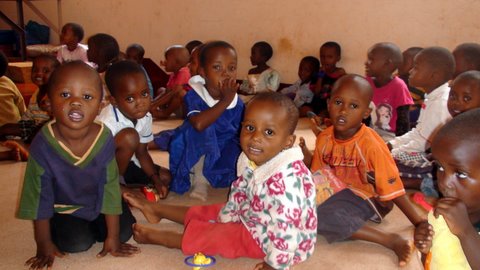
(This letter was written in 2011, but homeopathy is still used in Africa today for similar health issues and in similar situations.)
Dear Friends,
I am writing this letter from Tanzania, Africa.
It is hot today, perhaps 38C, but the morning was cool and crisp, and the Kilimanjaro had a fresh coat of snow to decorate its curves. As usual, there is no water or electricity but you get used to that.
At clinic, this morning, we saw a case of syphilis. Not the theoretical syphilitic miasm but a lady with huge ulcers on her legs, each 5-7 cm in size, and extremely painful. She described it as a ‘living hell’; she said that AIDS would have been preferable.
The ulcers started 18 years ago when she had syphilis. She was discharging pus and blood, which was quickly suppressed with an unknown drug. The pain and ulcers then spread to her legs, where they remain.
The smell of the ulcers was so putrid and offensive it permeated the whole room – we had to hold our noses.
I remembered Kent talking of the mercurial odours that every doctor used to smell. I never thought I would, but here in Africa you see everything: AIDS, syphilis, leprosy, scrofula, TB. But let me go back to the beginning.
I moved to Tanzania on 17 November 2008. Three months later, Camilla and our three small children followed. This was the beginning of a new chapter in our life, our mission to treat AIDS in Africa with classical homoeopathy.
At the time, we had no idea where we would live, how to open new clinics, and what obstacles would stand in our way. In many ways, we were naïve but that was probably a good thing.
Our journey actually begun 10 years earlier.
I dreamt about doing this for many years. In my post-graduate course, The Dynamis School, I often teach the philosophy and technique of treating epidemics and miasms.
Yet, I was well aware that a lot of this knowledge was based on theory, and although I had experienced many minor epidemics, such as childhood diseases or influenza, I wanted, as a professional, to face the challenge of treating a bigger totality, a large group of people suffering from a collective malady, in other words, a miasm (Par 103).
More importantly, I had treated several AIDS cases in the West and I had seen what homoeopathy can do.
Homoeopathy is particularly efficient in AIDS because it boosts the immune system. With an estimated 28 million people in Africa suffering from the disease, my wife and I felt it was our duty, as well as our privilege, to do what we can to help.
I was born in Africa, as were my parents and grandparents, so in a way I was coming back home.
My initial plan had been to concentrate on research. I wanted a watertight, ethical research that could show the world what homoeopathy can achieve in AIDS.
My colleague Tina Quirk and I spent ten years writing protocols, looking for academic partners and applying for funds. Sadly, all we got for our efforts was repeated disappointment. We discovered that there is plenty of money for AIDS and for Africa, but none for homoeopathy.
From Bill Gates to UNESCO, VIPs to charitable organisations, the usual response was: “Sorry we’re not at home and don’t bother calling again.” Even the homoeopathic research organisations are looking for more ‘interesting’ projects.
Finally, we realised that with or without funding or research opportunities, it was time to just get up and do it. So we did. Fortunately, I have a very brave homoeopathic wife.
Two years later, we have no regrets.
It has been an amazing journey of fulfilment, miracles, frustrations, obstacles, politics, warfare, discovery, and ultimately success.
Today, we have ten rural clinics, we have treated 1200 patients, I work at the local hospital, patients are flocking to the clinics and demanding more homoeopathy, doctors are asking about what we are doing.
We know African AIDS as well as one knows a good friend and we have honed in on most of the epidemic remedies.
In truth, treating AIDS with classical homoeopathy is the easiest part of our life today; there is no shortage of miracle results on a daily basis. Our success rate is somewhere between 90-95% in substantially reducing symptoms and alleviating side effects.
One of the questions we often get asked by visiting homoeopaths is why do African patients respond so well.
This is indeed surprising; the results are so much quicker than in the west. Patients often come back within 1-2 weeks with a total alleviation of symptoms, more energy, better appetite, increased weight and a big smile on their faces. Malaria cases are usually better within a day or two.
We have no single answer to this. The people here are perhaps more connected to their energy, to the earth, to their bodies or perhaps, there have been fewer generations of allopathic suppression, though it is certainly present now, or it is our western ‘mind-based’ homoeopaths and patients which are an obstacle to rapid recovery.
Whatever the case, homoeopathic results in Africa are rapid, gentle, and at least two years permanent. This is the source of our satisfaction and perseverance.
Patients in Africa seem to respond to a wide variety of remedies. Hence the variety of homoeopathic approaches, ranging from classical to combinations, unproved remedies, and radionics all seem to work well.
We have all seen this in the West but the phenomena of ‘first potency working’ is much more apparent here. Even when we had some inexperienced volunteers working in the project, they did reasonably well too.
The real issue at hand, however, is tracking the case into the second and third prescription, finding those remedies that penetrate deeply into the core issues of the epidemic, searching for its roots rather than simply treating the branches. We seek to touch the collective core of this malady.
While many remedies will spark an immediate curative impulse, the more precise the remedy, the deeper and more profound its action will be, the longer it will last and the more we will be able to understand what is really happening here.
You may ask why we are adamant about classical homoeopathy, when there are other ‘methods’ that are successfully treating AIDS in Africa.
First of all, because it is amazingly efficient. I have no doubt that other methods are also achieving very good results but we are classical homoeopaths.
This is our chosen path, for philosophical and practical reasons. We like to prove remedies and understand them. We like to perceive the disease, to individualise, to test our choice of prescription, to potentise our perception, to learn, to grow and to follow our individual journey towards the bigger totality.
Classical homoeopathy is not just a therapy, the giving of potentised remedies. It is a way of life.
This is just our personal choice. We respect anyone who comes out here and helps people with natural or potentised remedies. God knows there is more need than any one person or method can supply.
We have excellent connections with several projects in Africa, including Dar es Salaam in south-east Tanzania, Swaziland, Kenya, Ghana, Botswana and South Africa. We support each other: one family with a common mission.
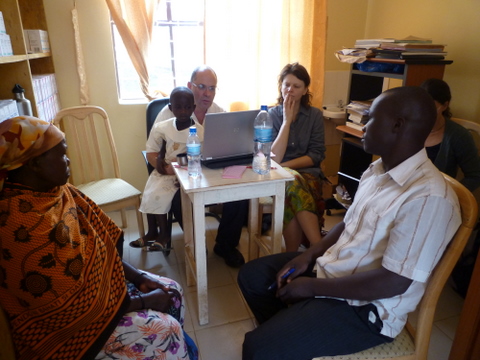
We usually start by looking all over town for Roger the Rasta translator, then travel to our various clinics; some slums, some rural.
We load and unload the remedy box, sit under a tree or in a tiny ‘sauna clinic’, or visit patients at home when they are too sick to come.
Transport is a problem.
At the moment, we only have one car, so our driver spends much of the day driving between clinics, home visits, and school pickups.
While our own house is comfortable, we have got used to long periods without electricity or water. We accept the mosquito bites, there is no other way.
Once in a while, I travel to the west to see patients, teach or raise funds for the project, but really we are here full-time.
Camilla has hardly left since we arrived and has built up a large number of clinics and patients. She works in the slums and does home visits, while I travel to further villages or the hospital.
We have had several volunteers visiting for two week sitting-ins or a couple of months clinical work. They stay in our ‘five-star Hahnemann house’. Our kids go to the international school and are enjoying the experience.
The biggest obstacles to our project are a lack of funds, bureaucracy, allopathic enemies, and a population here that feels it has a duty to relieve us of any money we have left.
To them we are all Bill Gates and they are experts at siphoning off mazungu (white people) money. There is no way around this.
Opening a clinic is not difficult, there is no shortage of AIDS here. The word of our successes has now spread far and wide, and village leaders are constantly asking us to see the many PLWHA (people living with HIV AIDS) in their area.
Doctors and hospitals are surprised, interested, and territorial.
As for volunteers, short-term visits are educational but to expand the project we need long-term practitioners, which means we must expand our infrastructure. This takes fund raising and organisation, both things I can do but I am personally not fond of.
We have begun training local Tanzanians and have arranged full time homoeopathic studies for two students.
Cases here are very different from those we were previously used to. There are no modalities, no strange, rare and peculiar symptoms, and hardly any mentals.
The main emotional symptoms are repeating themes of: “I am hungry,” “no money to eat,” “can’t pay school fees,” and “what will happen to the kids when I die?” All tragic, all common.
We all agree that after so many years of hearing over-emphasised mental-emotional cases, having cases without the mental-emotional obsession is a great relief.
Simple, straightforward, easy and difficult, these cases are one-sided and impossible to penetrate without the two God-given tools that see us through: the first being the slowly evolving genus epidemicus, of which I will talk later, the other being the dreams.
Whenever we ask a patient about dreams, a smile of satisfaction and recognition spreads over their face. “This Doctor knows where to look!”
Africa lives in a dream. Its roots are in the dark world of mystery and magic. By interpreting the dream and combining its understanding with our perception of the totality, we can penetrate the case and find a remedy. By now, we can more or less diagnose whether the patient is HIV-positive or taking ARV medication simply by the dreams.
Our system is based on Boenninghausen methodology. We take large general rubrics to form a totality, then look for the cherry on the cake to individualise the remedy.
We are very grateful to have my Repertory of Mental Qualities, a Boenninghausen-style repertory of mental-emotional themes. We use rubrics like ‘Money’, ‘Victim’, ‘Water’ or ‘Snakes’ on a daily basis.
Another software I developed, the Dynamic Case Taker, has also been extremely useful to us in collating, finding, storing, and sharing cases.
You asked about potency. 90% of the time, we are using the 12C daily. This is due to several reasons.
AIDS is a serious pathology and there are many obstacles to cure. The local people would not relate to a single dose, worse, they might think it is witchcraft.
Furthermore, we do not have a lot of remedies, so we find it best to stock one potency of each remedy. Several homoeopathic pharmacies have been very kind in donating remedies: Helios in the UK, Cemon of Italy, Neot Shoshanim of Israel, Hahnemann Labs and Hylands in the USA.
Poverty breeds AIDS and AIDS breeds poverty. This is part of its psoric root.
Most of the patients we see are widows.
Due to poverty and lack of resources, the husbands travel to work in far-away cities, staying for periods of six months to a year. While there, they sleep with prostitutes, usually young girls who must ‘work’ to survive. When they come back for Christmas, they infect two or three local women.
The men are less likely to test for AIDS because stigma is a killer. They would rather die than let people know they have AIDS, so they do.
When the husband dies, everyone knows his wife is infected, so of course it is ‘her fault’.
The husband’s family take all her possessions away, claiming she put an evil eye on him. She is left with four kids, two of whom might be positive, no house, no income, and too weak to work. These AIDS widows are our patients.
In this situation, energy is the key to survival.
If a woman is too weak from the disease, she cannot work in the field, which is hot and difficult work. As a result, the mother and child will die or be left to the mercy of one of the many corrupt orphanages.
So, when patients come back after a week with “much better energy”, it is a life saver.
Once the patients are well enough to work, the problem of where to leave the kids remains.
Because of the stigma no one will help; the extended family, which worked for millennia is shattered.
When Camilla went on a home visit and found a three year-old looking after a one year-old she decided to use our clinic as a day care centre for the children of AIDS widows.
We now have twenty-five kids to whom we give two good meals a day and an education they would never otherwise have been able to afford.
We also run nutrition projects and provide free spectacles, contributions from homoeopaths in the west. Homoeopathy must remove obstacles to cure or cure will not be permanent.

Let me start with data collection, which is the key to getting research funds.
At this point, I will clarify that one cannot claim to cure AIDS for several reasons.
First of all, there is no such terminology in conventional medicine, it just does not exist.
I could hypothesise that if a patient were symptom-free and virus-free for five years that might prove the point.
While we have two years of follow-ups in many cases and patients that have remained asymptomatic for this period, this is just anecdotal evidence.
The conventional standard test for AIDS is the CD4 count, the amount of immune cells in the blood.
We have found this test to be a fairly poor indicator; a view shared by many allopathic doctors. It is imprecise and, more importantly, shows only the quantity of CD4 cells but not their quality.
We often find that the CD4 count drops after a good remedy, although the patients report feeling much better. A couple of months later, it begins to rise, and after three to twelve months, many cases show an incredible increase in CD4.
The metaphor I use to explain this is that CD4 cells are like soldiers. The test counts the number of soldiers but does not tell you how many of them have no arms or legs; in other words, are ineffective.
After the homoeopathic remedy, the sick cells die off while the healthy ones slowly begin to thrive and multiply.
While AIDs patients in the west have a CD4 test once a month, in the villages, where we work, people usually have one once or twice a year.
The hospital is far away, transport is expensive, and when they do test, the hospital often neglects to write down the results. The patients regularly forget to bring their test scores to us. To collect data properly one would need to work in a hospital.
The good news is that after two years of fighting for the appropriate permits, I now work in a hospital. So, the possibilities are there but time moves slowly in Africa and one must learn to be patient.
The viral load (HIV count) test is another matter. This seems to respond well and efficiently, but we cannot be sure.
The test for viral load is very expensive, around 80 US dollars. There is no way hospitals and local authorities can afford this and therefore it is very rarely done (in the west, most AIDS patients have viral load tests on a regular basis).
Of the few cases in which our patients have had the viral load test, several have had the surprising result ‘no virus detected’.
This is pretty amazing and has puzzled the doctors. The normal justification, however, is that the virus is simply undetectable and hiding in the marrow, brain or liver.
Nevertheless in the long term, such results could prove conclusive.
I wish we could afford that kind of test in our data collection or research, but without funds for long-term research there is not much we can prove. Anecdotal evidence impresses no one.
As to research, one needs to show some data first. While there are some minor homoeopathic AIDS trials, they are generally considered to be poorly planned and hence meaningless by the industry.
No prior research equals no funds and no funds equals no serious research. This is the ‘Catch 22’ of homoeopathic research.
Behind that, however, lies the deeper truth that most institutions are afraid to associate themselves with homoeopathy.
Even if we got funds, we would need to apply for ethical approval. This could take up to two years and you need, of course, to find an academic partner.
One must also be careful not to expose any plans too early because homoeopathy’s enemies will and do try to prevent any research.
Not all is bleak, however. I am working together with other African projects on AIDS research and these are moving forwards.
Research will happen and homoeopathy will prove itself, it is just painfully slow. In terms of proving homoeopathy to the world, however, I have come to believe that research is not the most important tool, it is media, but we persevere on all fronts.
My personal research is in finding a genus epidemicus and making it simple to use, so that we can spread it throughout Africa. It would be convenient to seek a single remedy for AIDS.
Sometimes, I fantasise about it, about a combination remedy, or a single best-choice remedy. I am sure that it could be fairly efficient and certainly easier to distribute.
I would be a liar if I told you these thoughts had not crossed my mind but this is not the spirit of homoeopathy, nor does it follow the doctrine of treating epidemics with homoeopathy.
While we begin with the collective, the large point of view that has a single energetic distortion at its core, this source shines through the spectrum of many individual susceptibilities, and we must respect and address these individual tendencies. Hence a genus is never a single remedy.
As in a proving, epidemic disease is a collective totality emanating from one source but composed of different individual stories. Hence Hahnemann advocates several remedies for each epidemic, and these will be subject to change with respect to time and location. One very interesting phenomenon is how the remedies tend to vary from village to village.
My vision is to create a basic and simple repertory and remedy kit that can be distributed and easily taught to local health providers. This needs careful study and we try to avoid hasty conclusions.
We have now identified about 20 remedies that fit the local genus of AIDS. Whether they work in other regions and countries still remains to be seen.
We believe in freedom of information and transparency. I plan to publish a full list of remedies later this year once I feel confident that it is a good beginning to the process.
To achieve this I need to work in the hospital a bit longer, where the quantity, intensity and severity of cases is greater, and where we have access to tests.
However on this happy occasion I am attaching another article with a preliminary list of remedies.
The remedies are mainly psoric and tubercular as suited to the AIDS miasm. They include some classical polychrests, some new provings and a few odd balls that we found along the way.
The list includes quite a few of my own provings, which may either be due to my knowledge and preference for them, or to divine synchronicity that led me to do these provings. However, we often also use other people’s new provings, such as Ozone and the AIDS nosode.
One interesting thing we have discovered is that AIDS is a very neurological disease. The early symptoms are often herpes zoster, followed by numbness and possibly dementia.
This is not common knowledge but it was confirmed to me by one of the top AIDS consultants in the area.
Another interesting connection is how fungal this disease is.
My feeling is that fungus lies at the very base of this epidemic, hence our frequent use of my proving of Cryptococcus neoformans. But this is a long lecture, so I will leave it for another time.
You should also know that AIDS is not the disease it used to be.
Twenty years ago, death came quickly, perhaps in six months to two years. The pneumonias were deadly, the cancers and fungi spread rapidly and the body emaciated to a stick.
Of course, we still see this but it is much slower now. What was acute has now become chronic.
The intervention of ARVs (anti-retroviral medication) has changed the game. Patients live longer and can survive for many years, provided they have food. Hence the epidemic is fast becoming a miasm.
Let us talk about ARVs.
As you know we do not take anyone off ARVs. Our policy is one of strict non-interference with regard to conventional medicine. There is a danger that if one stops ARVs, the virus will rapidly mutate, and here lies the problem.
There is no doubt that ARV medication prolongs PLWHA lives.
I have heard that in the USA some people are so confident about this that they have ‘AIDS parties’ designed to deliberately acquire AIDS; easier to live with it than without it.
This phenomenon has now begun in South Africa too, after the announcement of various allopathic ‘wonder drugs’ that have yet to materialise.
While patients in the west have access to 15 or more lines of ARVs, however, here there is a maximum of two. Once these stop working, and eventually they do, there is nothing more that can be done and the result is treatment failure and most probably death.
The problem is with the side effects.
I have heard patients in the west describe it as hell. I have seen patients vomit every time they take a dose of ARV.
Here in Africa, patients do not have the luxury of complaining but they do suffer.
These ‘side effects’ are debilitating conditions: numbness, which is so severe you cannot feel your arms and legs at all, intense itching, debilitating weakness or horrible nightmares.
The big problem, nevertheless, lies in the long term: “Ten years ago, between 1 percent and 5 percent of HIV patients worldwide had drug-resistant strains. Now, between 5 percent and 30 percent of new patients are already resistant to the drugs. In Europe, it’s 10 percent; in the U.S., 15 percent.”[1]
This virus is very smart, very dynamic. It adapts quickly, especially when there are irregularities in taking the medicine, and here in Africa there always are.
When the virus is transferred, it is in the new mutated form, so that long term it may be a problem waiting to explode. Add to this the fact that hospitals are often chaotic: wrong diagnoses and mistaken prescriptions are constant occurrences.
For now ARVs are free. But the budget from the west has dropped by 25-50% in Africa since the recession, and Big Pharma does not give away freebies. When the money runs out, the virus may have a mutation party and spread wildly.
There is no doubt that ARVs do effectively prolong life.
One of the astounding things I have discovered is how homoeopathic they are in their action, like so many other conventional medicines. They can mimic many of the epidemic symptoms: the numbness, weakness, black tongue, dull vision, lack of appetite, fevers, and so on.
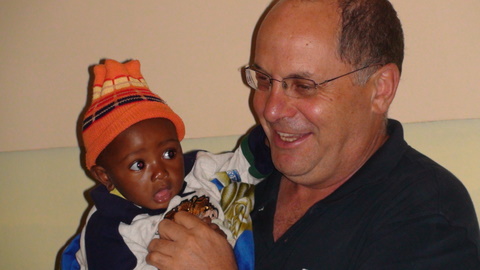
To take ARVs you need to eat regularly five times a day. It demands a strict lifestyle. This is not an option here.
Food and money are scarce, so side effects and treatment failures due to poor compliance abound.
Not everyone is on ARVs; some refuse to take them, others will not go to the clinics due to the stigma attached, and many have too high a CD4 count to justify medication.
If you want to know more about these subjects, I recommend you read Stephanie Nolan’s ’28 stories of AIDs in Africa’. She is a bit ARV-happy but it is still a very informative read.
You could also watch the film ‘House of Numbers’, from which you will learn that no one can agree on what this disease is really about.
We survive on very little, enough to get by from month to month. Most of our funding comes from our own savings and the wonderful homoeopaths and patients who help with what they can – thank you dear friends!
As yet, there is no money from the big guys and it is unlikely to come. One rich donor, however, could sort this out, as what is needed is not a huge budget. Money for research, a school, infrastructure, spreading the word.
So, if you know anyone wealthy have a word with them. Every penny goes a long way here.
Next week Homoeopathy For Health in Africa is taking part in the Kilimanjaro Marathon. Only the five kilometre version. We have ten people on our team, all with our T-shirts, and a lot of good will.
People often ask me if I plan to climb the Kili, not me; it’s too cold and too high! But when I see it every morning, I remember that we have a bigger mountain to climb. Our mission is:
- To treat as many AIDS patients as possible, using classical homoeopathy.
- To create a self-sustainable and self-perpetuating infrastructure for homoeopathy in Africa.
- To find the genus epidemicus for AIDS.
- To help spread this knowledge and the use of homoeopathy throughout Africa.
- To help prove homoeopathy to the world.
So not too much, hey! But we are on the way.
What a shame that the governments of developing countries do not promote homoeopathy more. It is the perfect medicine for developing countries and the perfect medicine for AIDS: no side effects, cheap and, most importantly, incredibly efficient.
AIDS, however, is big business in Africa and nobody likes people who meddle in big business. Still, I am sure we will win. Homoeopathy will thrive long after our enemies are gone. People love it, it suits their spirit and their way of life.
I have attached some cases for you to see, and while you are on the internet, please check out our movie and slideshow on www.homeopathyforhealthinafrica.org. Make sure you turn the volume on the slideshow up high, your kids will love the song!
Many people are surprised when they see the picture of Africa turned upside down. Some even turn their head when looking at it but as you and I know, nothing is really upside down when looked at from space, it is merely a prejudice.
This discrimination has always kept Africa at the bottom of our concept of the world. Camilla once said, It’s like a man with gangrene of the legs who thinks he is ok because his head is fine.
With this logo we hope to show and imprint on our consciousness that homoeopathy can turn things around and reverse the pathological order of the world today. Anyway, it is much better feng shui to have the arrow pointing up rather than down!

Viva la homoeopatia!
Your friend,
Jeremy.
Reference
1. http://www.msnbc.msn.com/id/34624393/ns/health-aids/ns/health-aids/
Photos
Jeremy Sherr, Wendy Pollock, Tina Quirk
Reprinted with permission of:
Homeopathy for Health in Africa
Interhomeopathy: International Homeopathic Internet Journal
Related Articles
Part 1: Homeopathy and AIDS – A Letter from Africa
Part 2: Homeopathy and AIDS –Three cases of HIV/AIDS: Felician, Esther, and Mary
Homeopathy in Africa – A Day in the Clinic
Video: Rayms B Raps About Homeopathy in Africa
Would You Like to Financially Support this Work?
All work at Homeopathy for Health in Africa (HHA) is done on a voluntary basis. HHA operates on relatively small amounts of money donated by the homoeopathic community, patients, well-wishers, and even personal savings.
HHA desperately needs funding to maintain and expand this project, to open more clinics and centres, to offer homoeopathic treatment for those who seek it, and to develop nutrition, farming and educational programmes.
Why not help them with a donation? It’s a simple way to make a big difference to the lives of others. Donate here.

